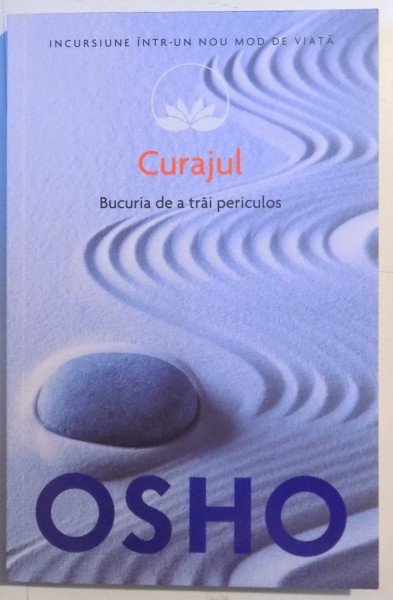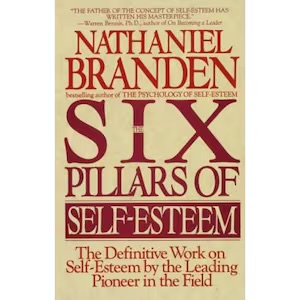The Courage to Live – The Wisdom of Osho
Introduction to Osho’s Philosophy
Osho, formerly known as Bhagwan Shree Rajneesh, was a spiritual guru who influenced contemporary thought with his unique perspective on life and personal development. His philosophy centers on the concept of “the courage to live,” emphasizing the importance of experiencing life authentically and consciously. In his works, he revisited key themes related to happiness, love, and enlightenment, challenging traditional perceptions of spirituality.
A fundamental aspect of Osho’s teachings is his encouragement for individuals to connect with themselves by eliminating fear and self-imposed limitations. Osho argued that fear is one of the greatest obstacles to a fulfilling life, and that the courage to overcome these fears is essential in the journey toward self-discovery. This approach was revolutionary for its time, offering a model different from conventional religious traditions, which often emphasize submission and conformity.
Osho also emphasized the necessity of living in the present, asserting that joy cannot be found in the past or the future, but only in the now. Through his methods, he inspired many people to explore meditation and other spiritual practices as ways to escape the mental noise and find inner peace. His teachings have not only enriched spiritual thought but also fostered personal growth, encouraging individuals to follow their passions and take responsibility for their own lives.
Defining Courage in the Context of Life
In Osho’s vision, courage often transcends the traditional notion of merely facing fear or danger. It manifests as a deep authenticity and self-acceptance where the individual takes responsibility for their own choices and life. As Osho emphasizes, the courage to be authentic involves a sincere acceptance of oneself, even in the face of criticism or judgment from others.
A vivid example of courage in everyday life can be seen in how a person chooses to pursue their passions, despite social pressures. For instance, an artist who decides to leave a stable, conventional job to explore their creative talent often faces both material and emotional risks. This act requires considerable courage because the individual’s uniqueness may be challenged by the community. In doing so, they become an exemplar of authenticity and the courage to live according to their own values.
Courage can also be found in interpersonal relationships. Being open and vulnerable with others may evoke anxiety, yet it is essential for building strong and lasting relationships. A person who expresses genuine emotions, sharing both joys and fears, demonstrates extraordinary courage. In this sense, being authentic in relationships not only strengthens connections but also sets an example for others, encouraging them to adopt a similarly free attitude.
Thus, according to Osho, courage becomes a vital tool for personal development and the acceptance of our human diversity. This approach invites us to redefine our perspective on courage, valuing not only external achievements but also inner honesty in the face of life’s challenges.

Courage vs. Fear – A Look at Duality
The duality between courage and fear is a concept deeply explored by Osho, who emphasizes that these two emotions are interconnected. Fear is often seen as an adversary, but according to Osho, it plays a vital role in our lives. By identifying and understanding our personal fears, a person can uncover a source of true strength and courage. Osho asserts that fear is not something to be avoided; rather, it is an invitation to delve into the depths of one’s consciousness.
In this context, courage can be seen as the conscious choice to act despite fear. Osho suggests that true courage is not the absence of fear but the ability to face it, allowing us to explore our vulnerabilities. Through practices such as meditation, reflection, and self-analysis, Osho encourages individuals to engage in an inner dialogue and challenge the limiting beliefs that fuel fear.
Personal development practices promoted by Osho, such as active meditation, help to release accumulated tension and open the way for authentic courage. In this manner, fear becomes a guide, offering clues about aspects of the self that require attention rather than serving as an obstacle. This holistic approach enables individuals to embrace courage while journeying through their fears, transforming this duality into an opportunity for growth and expansion.
Meditative Practices to Cultivate Inner Courage
Meditation is an essential tool in developing inner courage, as emphasized in Osho’s teachings. There are several meditation techniques, each designed to help practitioners discover their inner strength and overcome their fears. One popular method is observational meditation, which encourages individuals to observe their thoughts and emotions without judgment. This practice helps in understanding mental patterns and identifying the sources of fear, thus facilitating the cultivation of a more balanced and courageous perspective.
Another technique is dynamic meditation, an active form of meditation developed by Osho that involves intense physical activity followed by a period of inner silence. This method helps release accumulated tension and creates a mental space in which courage can flourish. Through the release of repressed emotions, the individual acknowledges their vulnerabilities and gains the strength to confront them.
Additionally, meditation in nature is an effective way to develop courage. Spending time outdoors not only helps reduce stress but also facilitates a deeper connection with oneself. This connection enables individuals to feel more grounded and fulfilled, thereby boosting self-confidence. Guided meditation, which includes themed visualizations, is also beneficial, as it encourages positive mental images that strengthen the ability to face challenges with a confident and hopeful attitude.
In conclusion, integrating these forms of meditation into one’s daily routine can lead to the development of profound and authentic courage. Through practices of observation, dynamic activity, and reconnection with nature, one can strengthen their inner bravery, thereby paving the way for a more meaningful life.
The Courage to Accept Others
A central idea in Osho’s teachings is that accepting others is an essential form of personal courage. This involves openness to diversity, both in thought and in the ways of being. Osho teaches that being courageous is not only about overcoming one’s own fears but also about accepting others as they are, with all their imperfections.
Accepting others means abandoning preconceived judgments and destructive criticisms, thereby allowing interpersonal relationships to develop in an authentic and constructive manner. Osho recognizes that every individual comes with a unique background, experiences, and perspectives, and the courage to accept others is a testament to emotional maturity. This ability to understand differences can transform relationships into a constructive interaction based on trust and empathy.
The importance of this acceptance is evident not only in personal relationships but also in broader communities. By accepting diversity in thought and way of life, we foster a climate of collaboration and tolerance that can counteract prejudice and discrimination. In a pluralistic society, having the courage to accept others contributes to creating an environment where all individuals feel appreciated and valued. Thus, courage extends beyond the self, directly impacting the quality of social interactions and community cohesion.
Inspirational Stories of Courage
Living courageously is not always an easy choice, and often, facing life’s challenges can seem overwhelming. However, inspirational stories of individuals who have overcome obstacles demonstrate the inherent power of the human spirit. One significant story is that of a woman named Maya, who was diagnosed with a terminal illness. Instead of being defeated by the news, Maya chose to live each day with intensity. Inspired by Osho’s teachings, she began sharing her experiences with others, transforming her pain into an opportunity to inspire and help. This choice turned her decision to live courageously into a journey not only for herself but also for those around her.
Another example is the story of Alex, a war veteran who returned home with deep traumas. Instead of isolating himself, Alex started attending support groups, where he discovered the power of vulnerability. His struggle for healing became a source of inspiration, as he began sharing his experiences publicly, helping other veterans find the courage to open up. Osho emphasizes not only the importance of facing one’s fears but also the power of creating supportive communities.
These stories highlight the importance of courage in everyday life. They remind us that regardless of our circumstances, the decision to live with courage and authenticity can have a profound impact on our own lives and on those around us. Every moment of vulnerability and every choice to embrace life are steps toward a more meaningful and joyful existence.
The Courage to Reinvent Yourself
The concept of personal reinvention is fundamental in Osho’s teachings, emphasizing the importance of courage in the process of transformation. In a constantly changing world, the ability to adapt and redefine one’s path becomes a necessity. Osho teaches that every individual has the power to change their trajectory, explore their hidden potential, and reinvent themselves. This process involves a deep examination of the self and an openness to new experiences.
One of Osho’s key suggestions is to refrain from labeling oneself. When we view ourselves through the lens of external standards or expectations, we limit our ability to truly explore who we are. Therefore, the first step in personal reinvention is to accept and celebrate your inner diversity. It is important to allow yourself to change your perspectives, adjust your values, and sometimes even completely change direction in life.
Osho further emphasizes that embracing risks is a fundamental part of the courage needed for reinvention. Often, the fear of failure stops us from exploring new pathways. It is crucial to see past failures as valuable lessons and to take responsibility for our choices. This approach not only enriches our experiences but also strengthens our character by helping us transform our weaknesses into strengths.
In short, the process of personal reinvention, according to Osho, involves a journey of inner discovery, self-acceptance, and the courage to explore the unknown. Every step on this path must be taken with a sincere commitment to oneself, as this is the key to an authentic and fulfilling life.
The Connection Between Courage and Love
Osho’s conception of the interconnection between courage and love is based on the idea that both elements are essential for a truly authentic and free life. Osho asserts that in order to have the courage to live a full existence, one must first develop self-love. This self-love serves as the foundation upon which our courage is built, enabling us to take risks, explore our potential, and assert our desires.
Self-love, in Osho’s view, is not merely an affirmation of one’s own value, but an evolving process that involves acceptance, forgiveness, and self-understanding. When we love ourselves, we free ourselves from the fear of judgment and vulnerability, which in turn allows us to express our feelings and desires without the fear of rejection.
Moreover, Osho emphasizes that the relationship between courage and love extends beyond the self to include the capacity to love others. When we have the courage to express our love for those around us, we contribute to creating deep and authentic bonds based on trust and mutual respect. Thus, love becomes the catalyst for courage, providing the support needed to rise above life’s obstacles.
In conclusion, Osho’s philosophy teaches that to truly live, one must combine courage with love, both for oneself and for others. This interdependence empowers us to live in harmony with ourselves and those around us, facilitating a life filled with meaning and joy.
Conclusion – Embracing the Courage to Live
Osho’s teachings guide us toward a profound understanding of the courage to live in accordance with our deepest desires and values. His philosophy promotes authenticity and individual freedom, encouraging us to embrace our true essence. In a world full of constraints and social expectations, courage becomes an essential quality in our pursuit of a fulfilling life.
Osho invites us to explore our fears and doubts, transforming them into opportunities for personal growth. Through the practice of mindfulness and meditation, our dreams and aspirations become tangible, and the courage to make conscious choices in daily life becomes possible. Even in the face of adversity, expressing courage means representing our values and acting in alignment with our inner desires.
It is essential to recognize that the courage to live is not without vulnerability. Every step we choose to take towards personal fulfillment requires a degree of openness and acceptance of uncertainty. This does not mean an absence of fear; on the contrary, it is a profound form of courage that urges us to continue despite the challenges.
In the end, by embracing the courage to live, we take responsibility for our happiness and well-being. Putting Osho’s teachings into practice is a call to action—a chance to transform our desires into reality and create a life filled with meaning. Now is the moment to lift your voice and live your life as you truly desire, with an open heart and unwavering courage.
1. What does “the courage to live” mean according to Osho’s philosophy, and how does it differ from traditional concepts of courage?
According to Osho, “the courage to live” represents the ability to live an authentic and conscious life in harmony with one’s own desires and values. This concept goes beyond traditional definitions of courage, which often focus solely on facing fear or physical danger. For Osho, courage is more about being true to oneself, embracing one’s vulnerabilities, and taking responsibility for one’s choices and life. The essential difference lies in the emphasis on inner authenticity and self-awareness rather than just external acts of bravery.
2. How does fear influence our ability to live courageously according to Osho’s teachings?
Osho teaches that fear is one of the greatest obstacles to a fulfilling and authentic life. Fear can paralyze us, causing us to avoid new experiences and preventing us from expressing our true selves. Osho argues that fear should not be avoided but rather understood and confronted. By identifying and exploring personal fears, we can transform these negative emotions into a source of strength and courage. Rather than seeing fear as an enemy, we should view it as an invitation to delve into the depths of our consciousness and discover the inner power needed to overcome self-imposed limitations.
3. What are the main meditation practices recommended by Osho for cultivating inner courage?
Osho recommends several meditation practices to cultivate inner courage, each designed to help individuals discover their inner strength and overcome their fears. Among the most popular are:
- Observational Meditation: This technique encourages individuals to observe their thoughts and emotions without judgment, helping to identify thought patterns that fuel fear and procrastination, and leading to a more balanced, courageous perspective.
- Dynamic Meditation: Developed by Osho, this active form of meditation involves intense physical activity followed by a period of inner silence, helping to release accumulated tension and creating mental space where courage can flourish, enabling one to confront and overcome fears.
- Nature Meditation: Spending time outdoors and connecting with nature helps reduce stress and create a deeper connection with oneself, allowing a person to feel more grounded and confident.
- Guided Meditation: This involves thematic visualizations that encourage positive mental images, reinforcing one’s ability to face challenges with a confident and optimistic attitude.
4. How does Osho define the relationship between courage and love, and why is it essential for an authentic life?
Osho views courage and love as interconnected and essential elements for an authentic and free life. He asserts that to have the courage to live fully, one must first develop self-love. This self-love forms the foundation upon which our courage is built, enabling us to take risks, explore our potential, and assert our desires. For Osho, self-love is not merely a statement of personal value but an evolving process involving self-acceptance, forgiveness, and understanding. When we love ourselves, we free ourselves from the fear of judgment and vulnerability, which in turn allows us to express our emotions and desires without fear of rejection. Moreover, Osho emphasizes that the relationship between courage and love extends beyond the self to include the capacity to love others. Expressing love to others contributes to the formation of deep, authentic bonds based on trust and mutual respect. Thus, love becomes a catalyst for courage, providing the support needed to overcome life’s obstacles.
5. What is the duality between courage and fear in Osho’s philosophy, and how can this understanding be used for personal growth?
Osho deeply explores the duality between courage and fear, highlighting their interconnection. He explains that while fear is often seen as an enemy, it actually plays a vital role in our lives. By identifying and understanding our personal fears, we can transform these negative emotions into a source of strength and authentic courage. According to Osho, true courage is not the absence of fear, but the ability to act despite it. Instead of avoiding fear, we should explore and understand it, which allows us to develop a harmonious relationship with it. This understanding can be used for personal growth through:
- Self-analysis and reflection: Meditation and introspection help identify and explore personal fears, facilitating their transformation into sources of strength.
- Transforming negative emotions: By confronting and reinterpreting our fears, we can convert them into motivation for action.
- Developing resilience: Facing and overcoming fears increases emotional resilience and fosters a stronger, more confident mindset.
- Cultivating authentic courage: Accepting and understanding fear enables us to cultivate real courage, empowering us to live authentically.
6. How does Osho define courage in the context of personal reinvention, and why is it important?
In his philosophy, Osho defines courage in the context of personal reinvention as the ability to continually adapt and redefine oneself in accordance with internal and external changes. Personal reinvention is a journey of self-discovery and transformation, where one explores hidden potential and reshapes one’s life path. Osho emphasizes that reinventing oneself requires the courage to let go of old labels and societal expectations and to remain open to new experiences and perspectives. This involves:
- Releasing constraints: Letting go of external pressures that limit true self-expression.
- Exploring the self: Engaging in deep introspection to understand one’s true nature.
- Assuming risks: Embracing the necessary risks for exploring new directions and evolving personally and professionally.
- Accepting failures: Viewing failures as valuable lessons rather than definitive obstacles.
Personal reinvention is important because it allows individuals to reach their maximum potential and live a life that is both meaningful and fulfilling. By having the courage to reinvent oneself, one can adapt their identity and goals to life’s challenges, remaining relevant and committed to ongoing personal development.
7. How can accepting others be a form of personal courage according to Osho?
According to Osho, accepting others is an essential form of personal courage because it requires openness and tolerance toward human diversity. This acceptance goes beyond mere superficial tolerance; it involves deep, empathetic understanding of others, with all their imperfections and differences. Osho explains that being courageous in accepting others means abandoning preconceived judgments and destructive criticisms, thereby allowing interpersonal relationships to develop in an authentic and constructive manner. By sincerely accepting those around us, we create an environment of forgiveness and understanding, which is crucial for healthy, lasting relationships.
This form of personal courage is important for several reasons:
- Enhancing interpersonal relationships: Acceptance fosters deep and authentic bonds based on trust and mutual respect.
- Reducing conflicts: Eliminating judgments and criticisms minimizes tension and promotes harmony.
- Promoting diversity: Embracing diverse ways of thinking and being contributes to building a more tolerant and inclusive society.
- Developing empathy: Acceptance teaches us to be more empathetic by understanding the unique experiences and perspectives of others.
8. How does Osho use inspirational stories to illustrate the concept of the courage to live?
Osho utilizes inspirational stories to illustrate the courage to live by presenting concrete examples of individuals who have demonstrated courage in the face of adversity and chose to live authentically. These stories serve as models of inspiration and learning, showing how courage can transform lives and positively influence those around us.
Notable examples include:
- Maya’s Story: Maya, diagnosed with a terminal illness, chose to live each day with intensity. Instead of succumbing to the pain and fear associated with her condition, she shared her experiences with others, turning her pain into an opportunity to inspire and help. Her decision to live courageously became a journey not only for herself but also for those around her.
- Alex’s Story: Alex, a war veteran with deep traumas, decided to join support groups and share his experiences publicly. By choosing vulnerability, Alex found the courage to heal and, in doing so, inspired other veterans to open up and seek healing. His story demonstrates how the courage to be vulnerable can lead to personal recovery and the creation of a supportive network.
These narratives show that the courage to live is not just about external achievements but also about facing and transforming one’s fears and vulnerabilities into opportunities for personal growth and inspiration.
9. What role do self-care and mindfulness play in cultivating the courage to live according to Osho?
Self-care and mindfulness play a crucial role in cultivating the courage to live according to Osho. These practices help develop a deep connection with one’s inner self, reduce stress and anxiety, and promote a state of awareness and acceptance.
Self-care, as emphasized by Osho, involves caring for oneself as a foundation for living courageously and authentically. This includes:
- Self-acceptance and forgiveness: Embracing one’s flaws and mistakes helps reduce self-criticism and nurtures a kinder, more loving attitude toward oneself.
- Maintaining balance between mind and body: Engaging in activities that promote physical and mental health, such as exercise, healthy eating, and proper rest, increases energy and emotional resilience.
Mindfulness—or being present— is essential in Osho’s philosophy for cultivating the courage to live. By practicing mindfulness, individuals can:
- Develop awareness: Mindfulness allows one to observe thoughts and emotions without judgment, making it easier to understand and manage internal fears.
- Reduce stress: Focusing on the present moment reduces anxiety about the past or future, promoting a state of calm and balance.
- Improve decision-making: Enhanced mental clarity from mindfulness leads to more conscious and value-aligned decisions.
Integrating self-care and mindfulness into a daily routine lays a solid foundation for emotional and mental well-being, which is essential for developing the courage to live an authentic and fulfilling life.
10. How can procrastination be transformed into action according to Neil Fiore’s approach?
According to Neil Fiore’s approach in his book “Procrastination: The Disease of Delay,” transforming procrastination into action involves a structured process that combines awareness of the behavior, identifying its underlying causes, and applying effective strategies. Essential steps include:
- Recognizing Procrastination: The first step is to become aware of the problem and identify specific procrastination patterns, which can be done through self-reflection and journaling.
- Identifying Underlying Causes: Understanding the deeper reasons behind procrastination—such as the fear of failure, perfectionism, lack of motivation, or poor time management—is crucial.
- Setting Clear Objectives: Define specific, measurable, achievable, relevant, and time-bound (SMART) goals to create a structured action plan.
- Planning and Prioritizing: Develop a detailed plan that includes the necessary steps for achieving each goal, and prioritize tasks based on their importance and urgency.
- Breaking Tasks into Smaller Steps: Dividing large projects into manageable stages reduces overwhelm and facilitates steady progress.
- Using Time Management Techniques: Applying methods like the Pomodoro Technique (focused work intervals followed by short breaks) and using time management tools such as Todoist or Trello helps maintain focus and prevent delays.
- Reducing Distractions: Creating an optimal work environment by minimizing external distractions increases concentration and productivity.
- Motivation and Rewards: Setting rewards for task completion or intermediate milestones can enhance motivation and transform the work process into a more enjoyable experience.
- Implementing a Support System: Sharing your goals with friends, family, or mentors provides emotional support and accountability, facilitating commitment to your objectives.
- Practicing Self-Compassion: Adopting a compassionate attitude towards oneself regarding failures or delays helps maintain a positive mindset and prevents self-sabotage.
- Regular Self-Evaluation and Strategy Adjustment: Periodically reviewing progress, identifying challenges, and adjusting strategies as needed ensures continuous, effective evolution in combating procrastination.
By following these steps as outlined by Neil Fiore, individuals can transform procrastination from an unproductive behavior into a drive for action, thereby enhancing productivity and achieving a better balance between personal and professional life.









